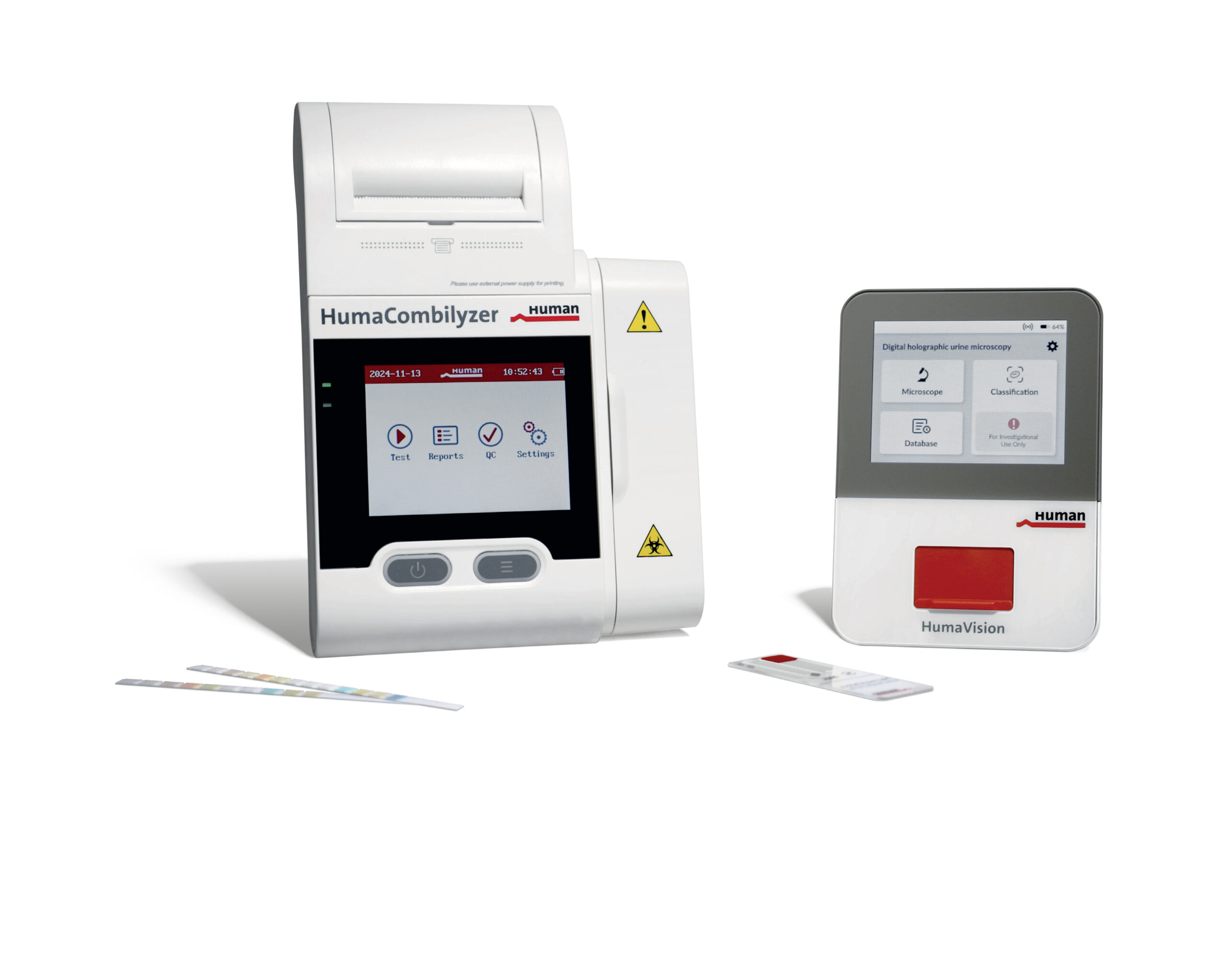- Your cart is empty
- Continue Shopping
On-the-spot urine strip analysis and microscopy
Urinalysis
Urinalysis offers on-the-spot urine strip analysis and microscopy, providing quick and reliable diagnostic insights. With its portable, hand-held design, it ensures precision and convenience wherever it’s needed — from clinics to bedside testing. Delivering immediate results for key healthcare parameters, it supports faster decision-making and improved patient care. Powered by innovative AI-based technology, this system enhances accuracy and efficiency, setting a new standard in modern urinalysis diagnostics.
- Portable, hand-held precision
- Immediate results for health care parameters
- Innovative AI-based urinalysis

Urinalysis
Portable, on-the-spot testing
Urine diagnostics for a wide range of medical conditions
Urinalysis provides essential insights into various bodily functions and is routinely performed as a basic screening test for nearly all patients. It begins with the use of urine strips followed by urine microscopy to investigate abnormal findings in greater detail. These findings may indicate conditions such as urinary tract infections, diabetes mellitus, renal insufficiency, kidney and bladder stones, kidney and bladder cancer, or liver diseases.

Urine test strip analysis
Urine dipstick tests detect the presence of waste chemicals in urine. They offer a quick identification of analytes like glucose, proteins, ketones, pH, bilirubin, nitrites, leukocytes or blood. The respective results provide information on metabolic and systemic conditions.
Urine microscopy: manual vs. AI-based particle analysis
This method identifies and counts the formed particles, such as cells, crystals, casts, bacteria, and other particle. Urine particle analysis ideally should be performed on native urine, immediately after sampling, to avoid the loss of cells or changes in particles over time or due to preparation steps.
The results of manual microscopy, depend on the sample preparation steps (centrifugation, sediment sampling) and user operator skills. When using HumaVision with artificial intelligence (AI) and Digital Holographic Microscopy (DHM), urine particle analysis becomes objective and fast. By utilizing native urine, sample preparation steps become obsolete.
“duces the risk of human error but also saves time and ensures digital documentation and storage of results,
improving accuracy and traceability.”


| Manual | AI-based | |
| Time to result | 20-30 min. | 2-7 min. |
| Particle differentiation and counting | Well-educated operator eye | Artificial intelligence (AI) and Digital Holographic Microscopy (DHM) |
| Differentiator | Particle size (2D), particle shape (2D) Particle gray scale | Particle size (3D), particle shape (3D), Particle gray scale Particle phase information (based on refractive index, geometry, topography) |
| Results standardization | Inter-observer variability | 1 million particles test data base for each parameter |
| Analyzed sample volume | 0.041 mm³ | 0.525 mm³, 13 times bigger volume |
| Sample preparation | Centrifugation and pipetting | None |
| Reporting | Manual | Digital |
| Results | Semi-quantitative (no counting chamber) | Quantitative, count/μl |
HumaCombilyzer & HumaCombina
Portable urine test strip reader
HumaCombilyzer is a portable, semi-automated urine test strip analyzer, ideal for in-office and more rural healthcare settings.
Ideal for different healthcare settings
- Easy-to-use instrument for reading of HumaCombina urine test strips
- Ergonomic and lightweight instrument design supports handheld use
- Optional battery operation increases mobility
- Provides fast patient results within 60 seconds
- Flexible immediate or subsequent direct result printout, no need for manual transcription
Reliable and standardized patient results
- HumaCombina urine test strips enable fast and effortless assessment of urine status, supporting the detection of pathological changes
- Automated result reading eliminates the subjectivity of visually read results
- Consistent and automatic timing, urine strip reading, and result interpretation
- Alternative strip options tailored to different diagnostic needs
